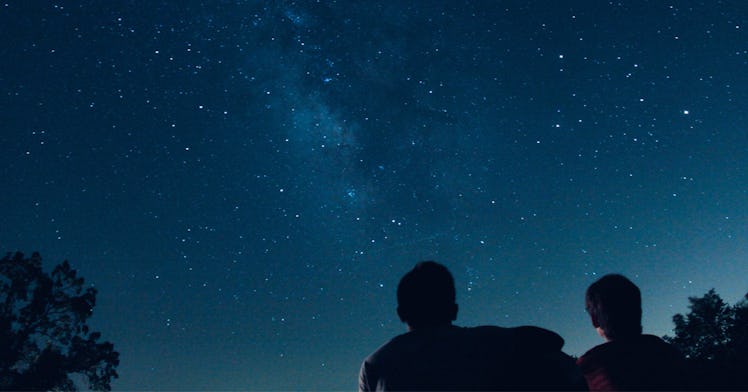Best Ways to Watch the Geminid Meteor Shower With Your Kids
You won't want to miss this!

On the nights of December 13 and 14, your family will have the chance to see a slew of multi-colored meteors streak across the sky. This isn’t just a few comets moving across the sky. It won’t be over in two seconds. The Geminid Meteor Shower a true spectacle and it’s going to be at its best, brightest and clearest. This meteor shower happens every year, but NASA has identified the two days that your family should watch it. Here’s what to do.
Let Your Kids Stay Up Late
Your kids might need to skip their bedtimes to make this happen. NASA recommends that watchers go outside at 10:30 p.m. (Astromony magazine thinks this will be local time in most time zones) The meteor shower is going to peak at 2 a.m., but your family will still get to see some multi-colored meteors streaking across the sky. The meteors burn off different colors depending on what chemicals they’re composed of, but you can expect to see yellow, red, blue-green and violet in the skies.
What You’re Looking At
Unlike most meteor showers, which are usually caused by the remnants of comets, this shower is caused by asteroids. Every year, Earth passes through a cloud of debris from an asteroid named 3200 Phaethon. The pieces of asteroid hurtle through the Earth’s atmosphere and combust. The really cool aspect of this meteor shower is that at least 120 meteors are produced in an hour. They travel at a rate of 22 miles per second.
Decmeber 13 (Thursday) is the Best of the Two Days
There will be no moonlight on December 13 to make the meteors seem less bright and brilliant. So if you’re going to watch, that’ll probably be the best day to do it. Although, if you live near a city or in a suburb, you might want to drive to a less populated area.
“Those with really dark skies—away from city and suburb lights—should see as many as 100 Geminids per hour when Gemini is highest around 2 AM,” Bill Coa ok, lead of NASA’s Meteoroid Environments Office, told Newsweek. “Folks in suburbia should see one quarter to one half this rate, depending on the amount of artificial lights in their vicinity.”
Final Advice for NASA
If this is your first rodeo with viewing meteor showers, Cook has some great advice on how to get the best viewing experience.
“The keys to observing meteor showers are 1) find the darkest site you can, 2) give your eyes 30 to 45 minutes to adjust to the dark (do not look at your bright cell phone screen, as that will mess up night vision), and 3) lie on your back looking straight up so as to take in as much sky as possible. Do not look at Gemini as meteors closer to the radiant are less impressive, with shorter trains.”
Oh, and if your kids are wondering if these asteroid pieces can hurt us, the answer is no. The fact you’ll see so much light is specifically because these objects are burning up in our atmosphere.
This article was originally published on